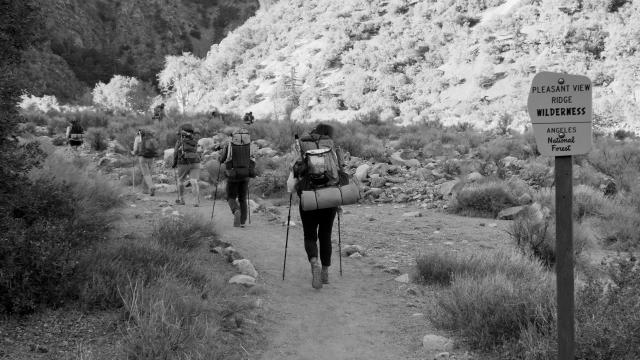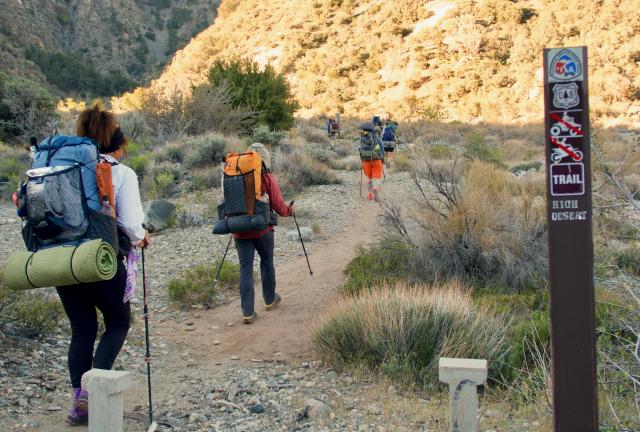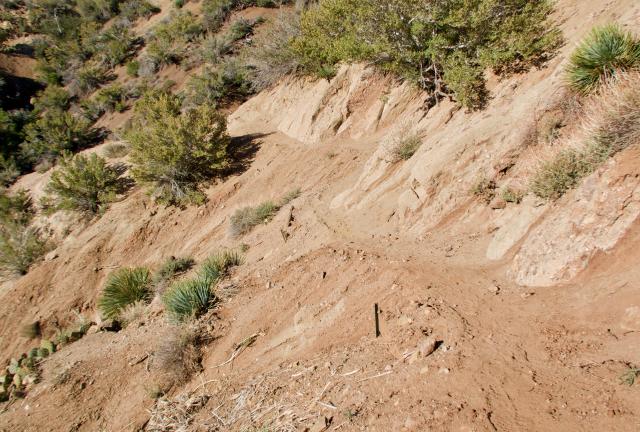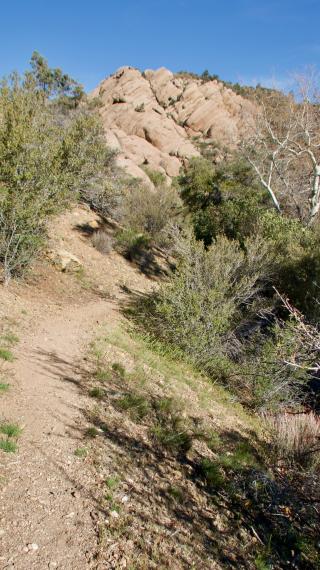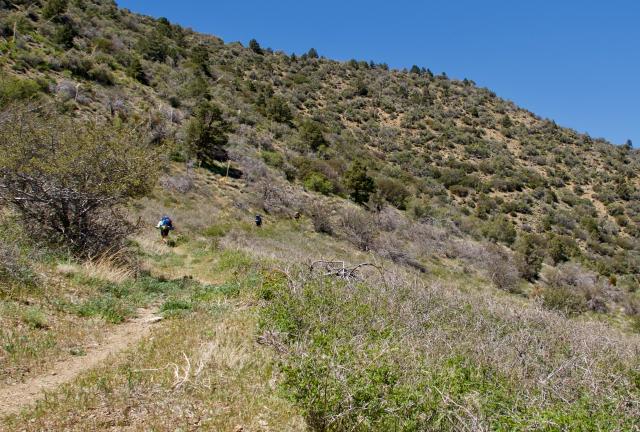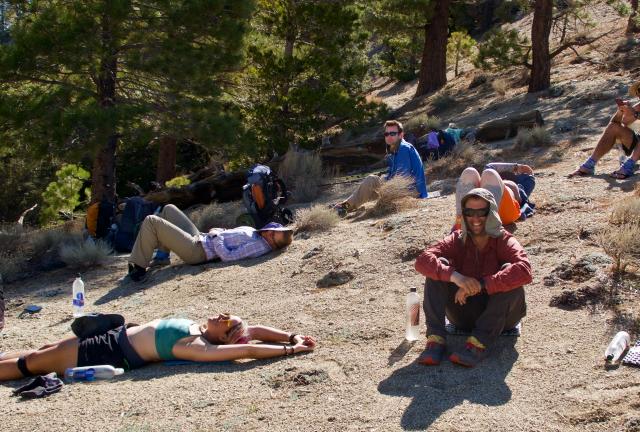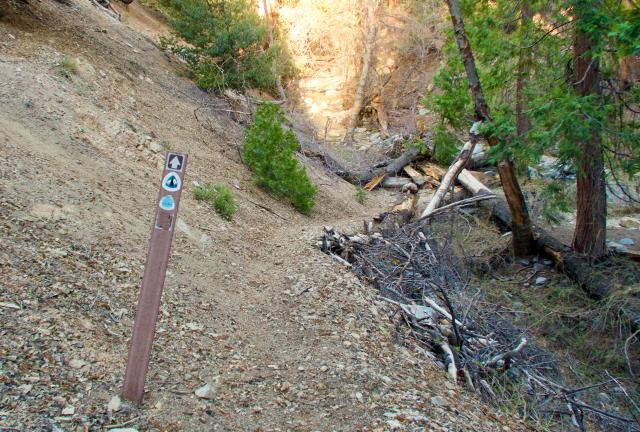Although we were intentionally taking a detour to avoid a risky climb over ice and snow on the summit of Mount Baden-Powell, there was another reason for our alternate route.
A segment of trail was closed to protect an endangered species, the mountain yellow-legged frog. We were required to go around that.
The other option would be to walk along California Highway 2. The road past Vincent Gap and Baden-Powell was closed, so there wouldn’t be any traffic on it, but that wasn't preferable to the trail.
Or so I thought.
